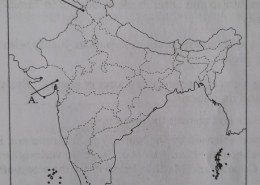The correct answer is (b). Sustainable development means using resources wisely so that the present generation meets its needs without harming the ability of future generations to meet theirs. It focuses on balancing environmental protection, economic growth and social well-being ...
Discussion Forum Latest Questions
The Rio de Janeiro Earth Summit (1992) was held to promote environmental protection and sustainable development globally. It brought together world leaders to address issues like climate change, biodiversity loss and the balance between economic growth and environmental conservation. Correct ...
Correct Option: (B) Haryana and Punjab. Haryana and Punjab use excessive fertilisers, pesticides and insecticides to increase agricultural output. The Green Revolution practices led to soil degradation, groundwater pollution and health hazards, making these states prominent examples of chemical overuse ...
Continuous rainfall in Kalimpong caused landslides along the Teesta River, leading to property loss and displacement. Such landslides not only destroy homes and infrastructure but also force people to move, causing economic and social disruptions. Correct Option: (b) Displacement of ...
